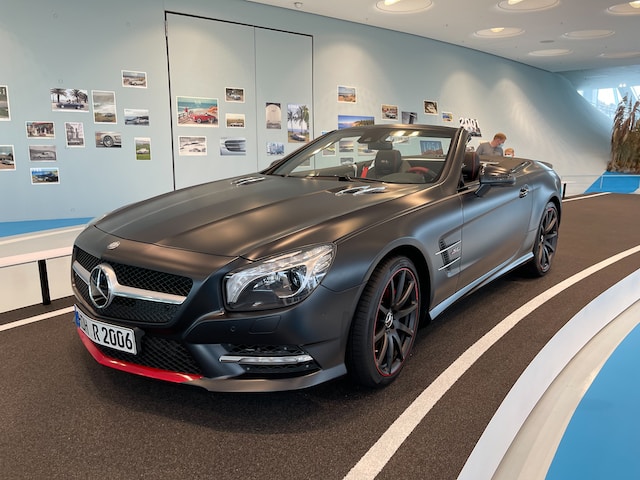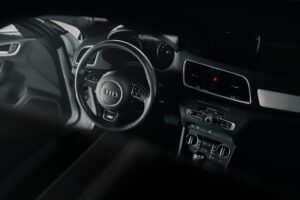
Unleashing the Power: Exploring the Performance of the Mercedes SL
Contents
- 1 Introduction
- 2 The Mercedes SL is a luxury sports car that is the flagship of Mercedes.
- 3 The SL has had two generations, known as the R107 and the R129.
- 4 The earlier SLs were known for their low drag coefficient and smooth lines.
- 5 The Mercedes-Benz SL roadster was introduced in 1954 at the Paris Motor Show as a replacement for the 300SL (W198).
- 6 The R107 generation was produced from 1972 to 1989 with a total production of 49,042 units.
- 7 In 1989, the second generation SL was launched with some styling changes from its predecessor including a new grille and headlights.
- 8 The second generation SL has been produced continuously since 1989 with no major changes to its styling but numerous improvements under the hood.
- 9 The Mercedes-Benz has embodied luxury and performance since its inception over 60 years ago
- 10 Conclusion
Introduction
The Mercedes-Benz SL is a luxury sports car that is the flagship of Mercedes. The SL has had two generations, known as the R107 and the R129. The earlier SLs were known for their low drag coefficient and smooth lines. The Mercedes-Benz SL roadster was introduced in 1954 at the Paris Motor Show as a replacement for the 300SL (W198). The R107 generation was produced from 1972 to 1989 with a total production of 49,042 units. In 1989, the second generation SL was launched with some styling changes from its predecessor including a new grille and headlights. The second generation SL has been produced continuously since 1989 with no major changes to its styling but numerous improvements under the hood
The Mercedes SL is a luxury sports car that is the flagship of Mercedes.
The Mercedes SL is a luxury sports car that is the flagship of Mercedes. It stands for Sport Leicht (Sport Light), and it’s been around since 1954.
The SL has always been one of the most powerful and luxurious sports cars in the world, with a long history of being both an engineering marvel and an icon of style.
The SL has had two generations, known as the R107 and the R129.
The first generation of SLs is commonly referred to as “the classic” and was produced from 1972 to 1989 with a total production of 49,042 units. The second generation began in 1989 and continues today.
The current model is actually one of the most successful sports cars ever made by Mercedes-Benz; over 700,000 units have been sold worldwide since its introduction in 1990!
The earlier SLs were known for their low drag coefficient and smooth lines.
The shape of the car, with its low profile, aerodynamic design and low frontal area made it ideal for high speed driving. It also helped reduce wind noise inside the cabin by directing airflow over top of the windshield rather than into it.
The Mercedes-Benz SL was introduced in 1954 as a roadster version of their popular 300SL Gullwing coupe – one of the first sports cars ever produced with an automatic transmission (the first production car with fully independent suspension). However, this wasn’t enough to save it from being discontinued after just nine years due to poor sales numbers; but luckily it returned in 1989 with new styling designed by Erhard Schnell before being discontinued again in 1999 when Mercedes decided instead focus on launching newer models like SLS AMG Roadster which was launched around same time period so both models could coexist without competing against each other
The Mercedes-Benz SL roadster was introduced in 1954 at the Paris Motor Show as a replacement for the 300SL (W198).
The name SL stood for “Sport Leicht” (Sport Light) and was first used on a car in 1949 when Mercedes built its new racing car, the Rennwagen Type 300 SLS.
The original design intent of this model was to create an automobile that would be more practical than the Gullwing but still retain its signature elements like rounded fenders, long bonnet and low roofline. The result was an incredibly stylish vehicle that looked fast even when standing still!
The R107 generation was produced from 1972 to 1989 with a total production of 49,042 units.
The SL (R129) is the current model and has been in production since 1991.
The Mercedes-Benz SL roadster was introduced in 1954 as an open-top version of the W198 series “Ponton” sedan that debuted two years earlier at the Frankfurt Motor Show (1952). It was designed by Wilhelm Hofmeister under chief engineer Fritz Nallinger as a 2+2 coupe with a folding fabric roof turned backwards when stowed away behind the rear seat backs so it would not take up space inside the trunk compartment when folded down for open air motoring on sunny days – which explains why all subsequent models have had this feature ever since!
In 1989, the second generation SL was launched with some styling changes from its predecessor including a new grille and headlights.
The engine remained the same but the transmission was upgraded to a 5-speed automatic gearbox, which improved performance and fuel economy.
The body style changed from 2-door coupe to 4-door sedan/saloon/sedanette (depending on where you’re from). This gave the car more room inside, making it suitable for everyday use by families or company executives who wanted something luxurious yet practical enough to carry their briefcases around town.
The second generation SL has been produced continuously since 1989 with no major changes to its styling but numerous improvements under the hood.
The SL has been produced in several variants including the SL500, SL55 AMG, and SL600.
The Mercedes-Benz has embodied luxury and performance since its inception over 60 years ago
The first model, the 190 series, was released in 1953. Since then, Mercedes has been a leader in the luxury car market and continues to be associated with Formula 1 racing today.
In fact, it’s fair to say that there are few things more synonymous with Germany than these two icons: fine wine and cars. As an example of this connection between wine tasting and automotive culture–and also because of my own personal interest–I recently attended an event at one of my favorite wineries where they paired wines with some classic cars from their collection (including one very special SLR McLaren). It was fun learning about how each type of grape goes well with certain types of cars!
Conclusion
The Mercedes SL has been a staple in the luxury car market for over 60 years, and it’s easy to see why. The sleek design and powerful engines make it stand out among its competitors. It is a classic example of what makes Mercedes-Benz so special: the ability to combine innovative engineering with timeless style.








